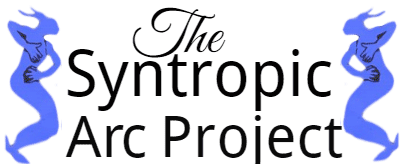Arrival is a movie about a peaceful alien’s first contact with humans on Earth. Or is it? As I left the theatre I was not thinking about the basic plot of the movie: man encounters alien, woman communicates with alien; man gets paranoid and tries to blow-up alien.
Rather, I came away with an almost inexplicable feeling of inner joy. Perhaps it was as simple as this: Arrival was the first movie in a long time that I actually sat through without being aware of the passage of time. (It seems all movies are about a half hour too long these days. )
 First, let me get the requisite critiques out of the way: the filming was inspired, the pacing perfect, and the music exquisite. I was delighted that the the story line was a landscape for questions of our age. Not the obvious questions that the military in the movie made a priority: Who are you? Why are you here? Where are you from? Rather, profound questions about the nature of time and memory and how language shapes the the choices we make.
First, let me get the requisite critiques out of the way: the filming was inspired, the pacing perfect, and the music exquisite. I was delighted that the the story line was a landscape for questions of our age. Not the obvious questions that the military in the movie made a priority: Who are you? Why are you here? Where are you from? Rather, profound questions about the nature of time and memory and how language shapes the the choices we make.
The aliens in the movie are heptapods , using a complex non-linear system of communication. Within this framework they know the end of a sentence by the beginning, and they can construct it from both directions at once. No left-to-right; no past, then present, then future. Furthermore, their written symbols are all round—the shape of your mouth when you say “om” , a whorl, or, perhaps, a magic mandala. Written language is visually expressed in the movie with the confident richness of a sumi brushstroke, artfully rendered after a spray of octopus ink.
Dr. Louise, our main protagonist, is a linguistics expert who drafted a paper on the assimilation of language. As she begins to decipher the alien’s lexicon, she began to be able to think as they do; to experience time in shifting saccades between present, past, and future.
Science is largely a process of discovering new ways to accurately predict the future, but the movie takes it a step further by asking what will we do with this information? Does it affect our free will; our decision-making power?
Running in the background of everyday life, mothers are right now making choices about whether to terminate a pregnancy or not. Everyday women are counseled about the troubles that could lie ahead because an amniotic draw of fluid reveals a gene mutation that will certainly cause an early death.
The movie does not let us off the hook: it demands that we carry the burden of a free will. We are judged and reckoned by it so that when we experience the ability to see bits of the future as if they were past events, we may be judged on whether we made the right decision.
Scientists have given diligence to theories of time. A glimpse back to Luigi Fantappiè, who theorized in 1942 that time came back to meet itself, and Richard Feynman who, in his Nobel Prize acceptance speech, defended the validity of his math which theorized that an acton in the future could affect a past event, portending the past, an Arthurian once and future past.
We are given circular transit passes to this dimension via the heptapod’s written language.The circle is rich with meaning in all cultures. It is binary-on/off, open/closed. It is transcendent and lucid.
 In the movie, Dr. Louise rips open a manuscript package which contains a volume on a Universal Language, written by Dr. Louise herself, but she doesn’t have the time to use it.
In the movie, Dr. Louise rips open a manuscript package which contains a volume on a Universal Language, written by Dr. Louise herself, but she doesn’t have the time to use it.
She uses Mandarin to save the day but we get a glimpse of the book, possibly showing the language as the same or similar to the alien circles. We are left with the question, why have we not developed a Universal Language? What happened to the effort of Zamenhof and Esperanto?
The circle has deep-rooted meaning in ancient cultures and symbolizes the self as well infinity. It is a symbol of completeness within the universe, of peace and the cycles of life and death. Perhaps we would all be better off in the future if we adopted it as an element in a Universal Language.
